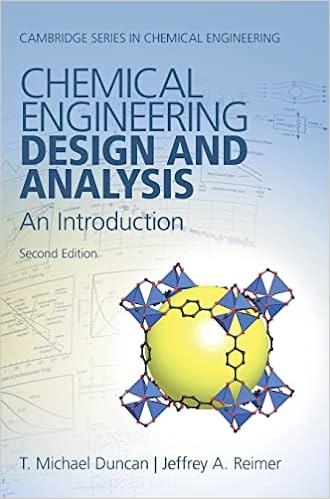please create a lab report answering the specific report requirements and also give a introduction, summary and conclusion please its due tomorrow!


Objective The purposes of this experiment are to understand the dynamic response of a liquid level control system under PID control and to apply the Ziegler-Nichols PID tuning method. Introduction and Theory To review: PID control refers to Proportional-Integral-Derivative control. PID control includes three different types of control action: proportional control action is proportional to the error from setpoint; integral control action is proportional to the integral of the error; and derivative control action is proportional to the derivative of error from setpoint. Equation 8 gives the expression for PID control: c(t)=c0+Kc[e(t)+T10te(t)dt+Ddtde(t)] where c(t) is the control action, c0 is the value of the control action when it is turned on, Kc is the controller gain, e(t) is the error from setpoint, 1 is the integral time constant and D is the derivative time constant. The process control engineer decides how many and which of the three control actions to include in a given controller and the appropriate values for the corresponding parameters. This decision process is called "tuning" the PID controller. P-only control typically results in offset from the setpoint. Integral action eliminates offset. Consequently, PI control is the most common type of control implemented in the chemical process industry. PID control is used in situations where the process control response is very slow. The rule of thumb is that the system deadtime (p) should be greater than the open loop time constant (p) for derivative action to be useful One classical approach for choosing controller parameter values is Ziegler -Nichols (ZN) tuning. ZN tuning is an experimental method based on quarter amplitude damping (QAD). Ku and Pu are experimentally determined and used with the values in Table 2 to calculate the tuned parameters based on whether P-only, PI or PID control is used. Ku is the value of the controller gain under P-only control at which sustained oscillations are first observed. Ku is reached by starting with a small gain and increasing the value in small increments until sustained oscillations are observed. Pu corresponds to the period of the oscillations observed at Kw. The ESPIAL experimental software records the proportional band ( PB) which needs to be converted to process gain (Kc). Recall the equation for the conversion is: 20 Kc=PB100%spanofsensorcontrolleroutput where the controller output is 0100% and the span of the sensor is 0100%. Procedure for field tuning: Open the software to "Practical 3: PID Control of Level" of the "PI \& PID Level Control"tab. Follow "Make Connections" to set up the process interface and controller. Tum on the Process Interface. Run Practical. Open Data Logger. Based on what you have leamed previously operating this equipment and further experimentation, adjust the tuning parameters to get "optimal" control. Use the following procedure to test the performance of a set of tuning parameters: Allow the system to stabilize or demonstrate consistent behavior. Click the "Set file name" button and enter a file name. Click "Start". Change the setpoint from 24% to 36%. Let the system stabilize. Change the setpoint from 36% to 24%. Let the system stabilize. Tum off data recording by clicking "Stop". Try a few different sets of tuning parameters until you are satisfied that you have the best. Repeat this procedure to get a clear run if there appears to be a problem with changing Change the setpoint from 36% to 24%. Let the system stabilize. Turn off data recording by clicking "Stop". Try a few different sets of tuning parameters until you are satisfied that you have the best. Repeat this procedure to get a clear run if there appears to be a problem with changing setpoints, a noisy signal, the valve freezes, etc. Procedure for ZN tuning Open the software to "Practical 1: Zeigler-Nichols Tuning" of the "Tuning PID Controllers" tab. Switch to automatic P-only control. The PB should be initially set to 60 . Choose the new PB or Ke then "disturb" the level by gently pulling the sensor counter weight string briefly, and observe the process response. Repeat to find the highest PB value that causes sustained oscillations. Record the PB (PBU) and measure the period of oscillations (Pv) in this response. Calculate KU. Calculate the values for Kc,PB,tr and to for P,PI, and PID modes. Switch back to "Practical 3: PID Control of Level". Test the controller with these parameters. Specific Report Requirements What are the manipulated and controlled variables? Show plots of all data for the experiment with corresponding tuning parameters. What criteria did you use to determine the "optimal" response? How does the process response with the ZN parameters compare to that observed in previous experiments and with the field tuning? Did the process perform as expected relative to theory with the ZN tuning parameters? Be specific. Compare and contrast the methods of tuning PID loops that we have used: Field, ZieglerNichols, and Cohen and Coon. Which do you recommend for the level control problem? 21 Experiment No. 8: Simulated Control of a Naphtha Cracker Simulation Provided by Joseph Babu at University of South Florida










